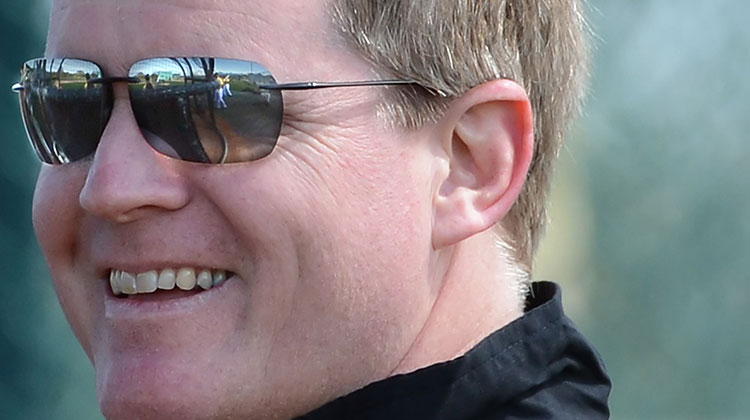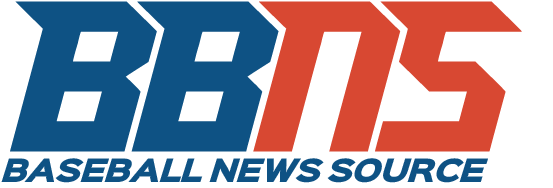 Before the new management regime in Pittsburgh, the Pirates were notoriously bad, even laughable when it came to drafting and developing players. Neal Huntington accepted the GM position for the Pirates in 2007. Shortly after, Huntington along with a few other GM’s around the leage employed a strategy that has brought about rule changes for all of Major League Baseball.
Before the new management regime in Pittsburgh, the Pirates were notoriously bad, even laughable when it came to drafting and developing players. Neal Huntington accepted the GM position for the Pirates in 2007. Shortly after, Huntington along with a few other GM’s around the leage employed a strategy that has brought about rule changes for all of Major League Baseball.
Teams that were not willing or simply could not spend the money needed to land top tier free agents began to spend more and more in the draft. According to Jorge L. Ortiz at USA Today, the Pirates spent $48 million on draft picks from 2008-2011, the most in baseball over that time.
Huntington and crew decided to take advantage of one of the only remaining avenues that allowed smaller market teams to improve their teams in an economical way—over slot players in the draft. In the past, any team could offer/pay any drafted player any amount of money they deemed appropriate.
The Pirates philosophy on drafting high school pitchers throughout the years, specifically 2009, is a big reason why these changes came about. The Pirates were offering high school players who had commitments to colleges a lot more than the recommended amount from Bud Selig’s commissioner’s office.
This rule change shut the door on one of the only remaining means for small market teams to try and keep balance in a league that clearly does not want balance. But that is enough Bud Selig talk; let’s focus on where all these high school arms are now that the Pirates once piled up with their version of monopoly money.
The Pirates went over slot on many players that are not mentioned in this article, but most fans are well aware on the progress of players such as Jameson Taillon, Josh Bell and Stetson Allie. This piece is focused solely on the high school pitchers the Pirates have selected that maybe did not have the flash or hype as the major prospects.
From 2009-2011 the Pirates decided to allocate more money than every other team towards the MLB draft. Spend less money to more players instead of spending more money on the same players when they are coming out of college. It is a gamble, as high school arms are much less predictable than college arms.
Spending $600k on Tyler Glasnow looks to be the more economical move rather than spending $8 million on a Gerrit Cole-type pitcher. If you can get the same result from a high school pitcher at less than an eighth of the price, it is worth taking that gamble every once in a while.
The only problem is, high school pitchers are not nearly as developed as they would be after two-three years of college. Therefor, signing ten high school pitchers might actually yield one to three stud MLB pitchers. Drafting ten college pitchers would most likely yield six or greater MLB stud pitchers. Having a good mix of college and high school arms is most likely the best approach to take.
In this very unscientific study, we look at eight mid to high level high school pitching prospects and about two-three of them have the potential to be top of the rotation starters.
2009
Zack Dodson -4th round, $600k
The estimated slot value for the pick used on Dodson was $261k. The Pirates offered $600k and the next thing you know, Dodson’s commitment to Baylor was no more. Dodson has been slowly working his way through the Pirates farm system, working through command issues and off the field issues as well.
In 2012, Dodson was suspended 50 games for failing a drug test. At this point Dodson needs to work on putting together a full solid season, as the lefty has yet to do so since being in the Pirates organization. He does not have strikeout stuff, as his k/9 innings ratio has never been above the mid 6 range, and plummeted down to 4.5 k/9 in 2013. Dodson looks to start in Bradenton in 2014.
Zack Von Rosenberg -6th round, $1.2 million
At this point, ZVR looks to unfortunately be the most disappointing of the over-slot pitchers the Pirates have selected over the years. ZVR was rated as the 41st best prospect entering the 2009 draft and the Pirates threw a bunch of money at him hoping to persuade him from going to college at LSU.
The tactic worked, as he inked a $1.2 million bonus. ZVR has not made it past class A+ Bradenton and is now pitching out of the bullpen. To start 2014, Von Rosenberg will most likely start out the season in Bradenton. In 2013, ZVR only pitched 23.1 innings and had a 3.2 k/9 inning ratio.
Trent Stevenson-7th round, $350k
Stevenson was offered $350k to join the Pirates instead of attending Arizona University. He accepted and now he is retired. Stevenson never got past Class A West Virginia and never endured much success as a pro. After a 2012 season in which he went 1-0 with a 9.26 ERA over 11.2 innings, Stevenson decided to retire.
Colton Cain-8th round, $1.2 million
In 2012, Cain was part of a package including Robbie Grossman and Rudy Owens that was traded to the Houston Astros to acquire Wandy Rodriguez. Cain’s k/9 ratio has gone down every season since he has been in the pros. In 2013, he had a 5.9 k/9 in Class A+ for the Houston organization. Cain has a lot of work ahead if he wants to make a difference in the big leagues.
2010
Nick Kingham-4th round, $480k
Kingham’s draft slot was projected to be offered $254, 700k, but the Pirates went ahead and offered $480k. Kingham decided not to attend the University of Oregon and signed with the Pirates. One of the brighter spots when referencing these over slot pitchers is Kingham.
He has shown improvement at every level he has been in, as he’s worked his way up to AA and should see AAA in the 2014 season. 2013 was a standout season for Kingham, posting 3.09 ERA in Class A+ with a 9.6 k/9 ratio. After getting promoted to AA, Kingham posted a 2.70 ERA with a 8.5 k/9 ratio. Kingham should split time between Altoona and Indianapolis in 2014 and assuming his improvements continue could see the big leagues in 2015.
Ryan Hafner-17th round, $450k
Leading into the draft, Hafner had a commitment to Missouri State. But when the Pirates offered him a signing bonus of $450k in the 17th round, the decision most likely became a little easier.
Hafner has had a mixed bag of results thus far in his minor league career. After struggling with command, Hafner was moved full time to the bullpen in 2012, but has found success in that role.
At Class A West Viriginia, Hafner posted a 7-0 record with a 3.00 ERA and a 10.6 k/9 inning ratio. Even with working out of the bullpen, Hafner accumulated 87.0 innings. Hafner looks to start the 2014 season in Bradenton, but yet to be determined if he will move back into a starting role.
2011
Tyler Glasnow -5th round, $600k
Glasnow was planning to attend the university of Portland, but the Pirates threw money at him and ended up having the biggest deal outside of the top 65 picks. Glasnow’s pick in the draft was projected to earn $166,500k, but the Pirates went above and beyond that number and as of now it looks to be paying off.
Glasnow had such an impressive season in 2013, an entire article could be dedicated alone to him. After impressing in 2012 in the rookie league and in Class A- State College, Glasnow was promoted to Class A West Virginia in 2013. Glasnow pitched the entire season at that level and dominated the league to epic proportions. His stuff was downright impressive for the 6’7” 19 year old pitcher.
Glasnow went 9-3 with a 2.18 ERA with a 13.3 k/9 inning ratio. For some perspective, Glasnow’s 36.3% strikeout rate was the highest among any starting pitcher in all of baseball in 2013. Check out this great read from Pirates Prospects , outlining just how ridiculous Glasnow’s strikeout numbers were.
After a full season at Class A West Virginia, Glasnow looks to start in Class A+ Bradenton. Glasnow will be a prospect to monitor closely over the next few seasons and if he continues on the upward trend, his major league debut will be something to look forward to.
Clay Holmes-SP, 9th round, $1.2 million
Holmes $1.25 million signing bonus is a record for the 9th round. Holmes, out of Slocomb High School, Alabama has had mixed results working his way through the farm system, but is still has promising potential. In 2013, Holmes put up a 5-6 record with a 4.08 ERA and a 6.8 k/9 ratio. Holmes will either start the 2014 season in West Virginia or could make the jump to Bradenton.
Thanks to Baseball Reference, Pirates Prospects and Baseball America for research.
